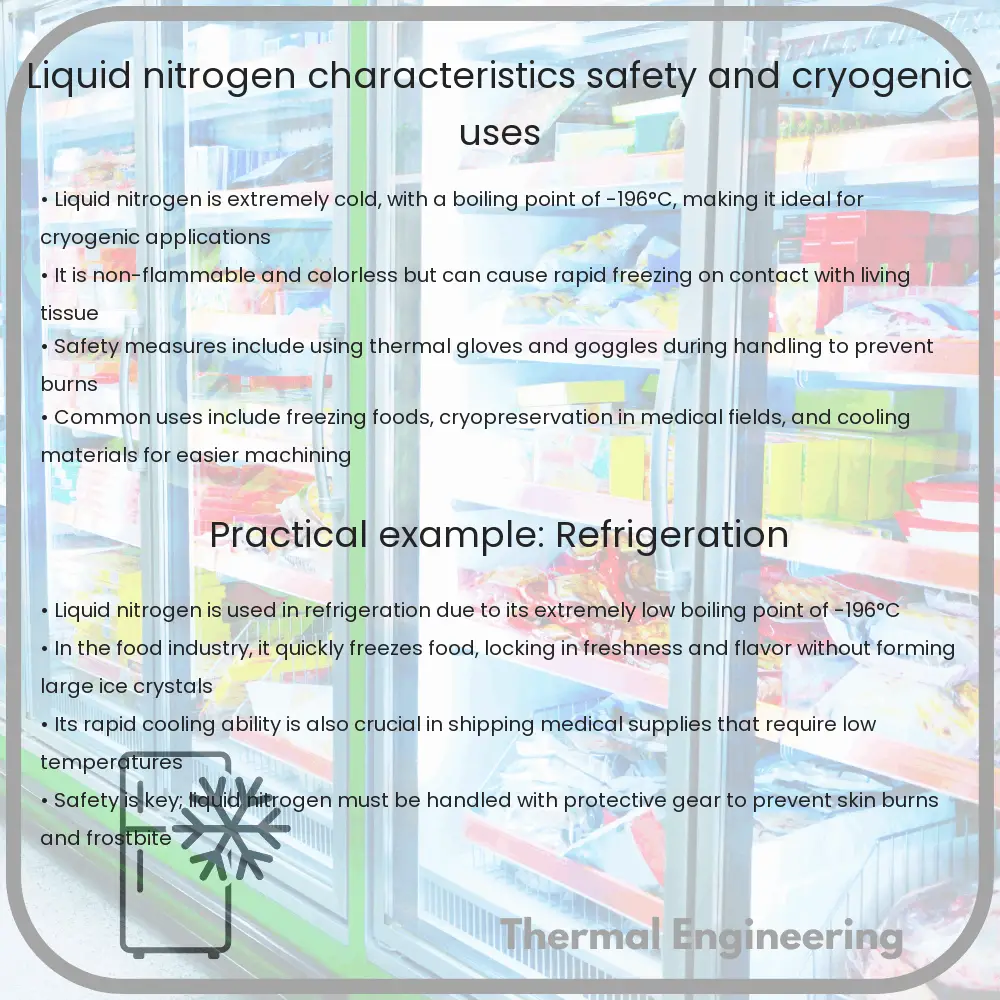Explore the properties, uses, and safety measures associated with liquid nitrogen, a vital substance in scientific and industrial applications.

Introduction to Liquid Nitrogen
Liquid nitrogen, denoted as LN2, is nitrogen in a liquid state at an extremely low temperature. It is a colorless clear liquid with a density of 0.807 g/ml at its boiling point and a dielectric constant of 1.43. Liquid nitrogen is produced industrially in large quantities by fractional distillation of liquid air.
Characteristics of Liquid Nitrogen
Liquid nitrogen is renowned for its extremely low temperature which stays at about -196°C (-321°F). This characteristic makes it a valuable resource in various scientific and industrial processes, especially those requiring very low temperatures. Additionally, liquid nitrogen is inert, colorless, odorless, non-corrosive, non-flammable, and relatively non-toxic. Because of these properties, it is widely used in environments where reactions with other substances need to be minimized or avoided.
Safety Concerns with Liquid Nitrogen
Despite its utility, liquid nitrogen poses several safety hazards that must be carefully managed:
- Asphyxiation: When vaporized, liquid nitrogen increases the volume of nitrogen in the air, displacing oxygen and potentially leading to suffocation in confined spaces.
- Cold Burns and Frostbite: Due to its extremely low temperature, contact with skin can cause severe cold burns or frostbite.
- Explosion Risk: When contained in sealed containers, the expansion of nitrogen from liquid to gas can cause explosions if the gas is not able to escape.
- Pressure Build-up and Vessel Failure: The rapid vaporization of liquid nitrogen can also lead to dangerous pressure build-up in containers not designed to handle such pressures.
Accordingly, handling liquid nitrogen requires strict adherence to safety protocols, including wearing protective clothing, using appropriate containers for transport and storage, and ensuring adequate ventilation in work areas.
Uses of Liquid Nitrogen in Cryogenics
Cryogenics involves the study and use of materials at very low temperatures. Liquid nitrogen, due to its low temperature and inert characteristics, is ideal for various applications in this field:
- Cryopreservation: Biological samples, such as sperm, eggs, and other genetic material, are preserved using liquid nitrogen to halt all biochemical reactions, maintaining their viability over time.
- Cooling of Materials: During scientific experiments, materials need to be cooled rapidly to observe their behavior under different thermal conditions. Liquid nitrogen serves as an excellent coolant in such instances.
- Superconductors Testing: Research on superconductors commonly uses liquid nitrogen due to its ability to bring temperatures low enough to achieve superconductivity in some materials.
- Shrink Fitting: Liquid nitrogen can be used in mechanical engineering to shrink components, allowing for tight fitting of parts in assemblies. When metals are cooled, they contract, thus fitting into small tolerances and gaps in machinery.
The versatility of liquid nitrogen makes it an essential substance in many sectors, particularly in scientific research, medical preservation, and industrial processes. As with any powerful tool, however, ensuring its safe use is paramount to harnessing its abilities effectively.
Conclusion
Liquid nitrogen represents a critical resource across various fields, especially where extremely low temperatures are necessary. Understanding its physical characteristics, handling it safely, and applying it appropriately, are key to benefiting from its use while minimizing any associated risks. Whether in engineering, biology, or physics, liquid nitrogen continues to be a cornerstone in the advancement of science and technology.